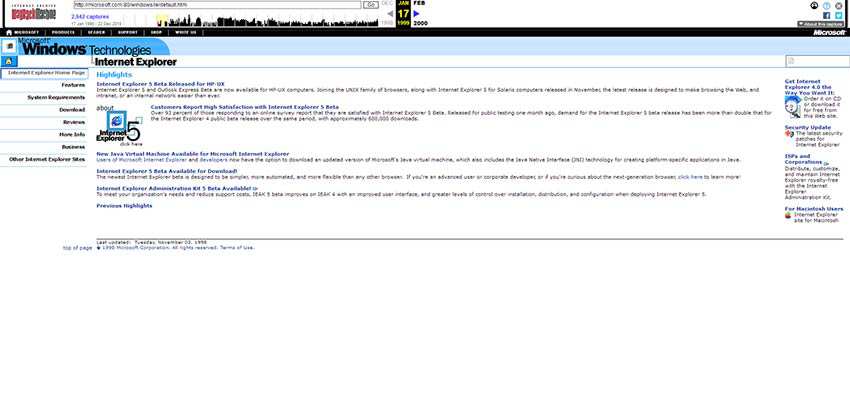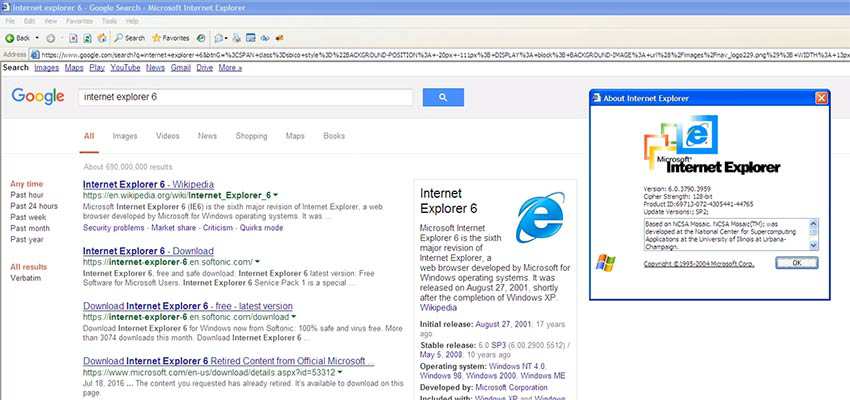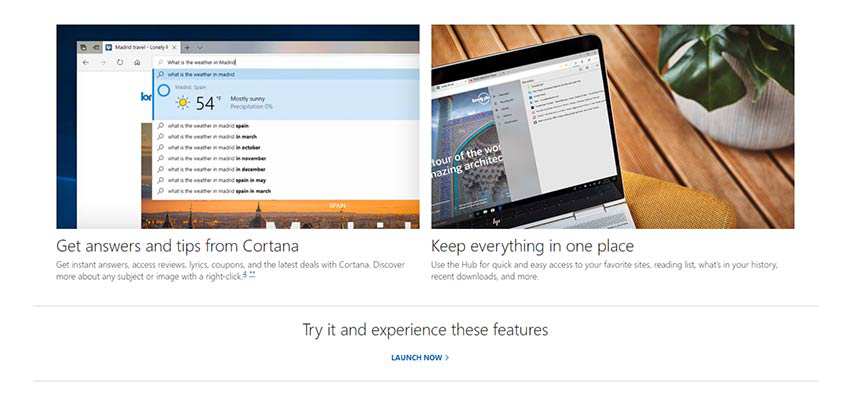The browser market is changing. With the recent news that Microsoft is abandoning its EdgeHTML browser engine in exchange for Chromium, it seems that Google has won the browser wars outright. What this all means is that one behemoth is, in essence, surrendering to another.
It’s not that Microsoft can’t still look to outdo Chrome in some areas, but they’ll both be building with the same basic parts. In that regard, it seems inevitable that the two products will be more alike than anything else.
Of course, given that Microsoft Edge is making up less than 2% of the market share, perhaps it’s all for the best. This lackluster showing notwithstanding, it would be a mistake to dismiss the impact of MS browsers over the past 20+ years.
With that, here are a few thoughts on what Edge, and to a much greater degree, Internet Explorer, have meant for web designers and users.
A Quick Climb to the Top
For a brief period before Internet Explorer’s 1995 debut, Netscape Navigator was the biggest browser on the web. That didn’t last long. By 1997, Microsoft had integrated IE into Windows and thus began its ascent to market dominance.
My experience in the web design community at the time was that there was a hard split among designers. Some favored IE and built sites around much of its proprietary code. For those that still favored Netscape and other competitors, the aim was more about building sites that would work on every browser.
This situation made things difficult for both designers and users. It was not unusual to see fairly large corporate websites look fine in IE, yet appear completely broken in other browsers. I can recall being hired to fix a few of these MS-enhanced messes back in those days.
One significant thing to note about this time in history was that Microsoft was often seen as a sort of villain in the industry. Its business practices were widely scrutinized and became the subject of a major court case in the United States. It even led to an infamous pie-in-the-face to Bill Gates.
But by the time antitrust proceedings came about, the damage had already been done. In 1999, IE had claimed a jaw-dropping 99% of the market.

An Improving Product with a Stubborn Past
Over the years, web designers have done their fair share of complaining about IE. But the software really did improve with each new version. By the time IE 11 was released in 2013, the browser was miles ahead of its predecessors.
The problem was that too many users weren’t upgrading to the more modern versions. While widely available in Chrome and Firefox, automated updates never really took hold in Internet Explorer. Not to mention that new versions of IE didn’t always support older versions of Windows. This resulted in widespread use of outdated entities, such as the much-reviled IE 6.
And, as anyone who had to design with fallback support for these archaic browsers can tell you, the process could be a nightmare. It took thorough and repeated testing. In turn, it cost untold amounts of time and money.
Meanwhile, IE’s competitors were releasing major versions at a breakneck pace. In particular, Chrome and Firefox were very much standards-compliant browsers. And since users didn’t have to think about performing their own upgrades, they were always on the cutting edge of technology.
As such, IE’s market dominance was no more. Looking back at October 2013 (when IE 11 was released), Chrome had jumped ahead in the market with a 3% advantage. Things would only get worse from there.
In 2015, Microsoft announced IE’s end-of-life and that the newfangled Edge browser would take the reins in Windows 10.

Edge: The Browser We Forgot
Whatever hopes Microsoft had of putting a stop to their decline in market share, it just didn’t happen with Edge. The steady decline continued after its July 2015 release, leading to the eventual demise of the product in its current form.
Was Edge an inferior product? That’s probably more of a subjective call. However, I never found it to be anything but solid and usable – that is, when I bothered to use it.
It would seem that Edge never caught on in part because of Microsoft’s inability to crack the mobile market. Remember, buying an Android phone means that you have Chrome. MS was hoping for the same to happen with the now-defunct Windows Phone.
Edge is speedy and handles the latest CSS techniques like Grid or Flexbox well enough. Compatibility wasn’t a problem nor a reason to not give Edge a try.
However, that fully-integrated experience on both desktop and mobile devices never came to fruition. One could make the case that this put Edge on a deathwatch the very day it was released to the public.

A Checkered Past with No Future
On one hand, it is disappointing to see one less innovator in the web browser market. I think that we all benefit from healthy competition and real choice. However, I don’t think I’m going to shed any tears for Microsoft.
That’s not because they’re incapable of making a good product – quite the contrary. More than anything in the present, the past history of IE and the negative effects it had on the web are what I remember most. It’s just time to move on from that legacy.
And, consumers do have choices beyond Chrome. Recent versions of Firefox have been outstanding. Plus, there’s no telling who will come up with the next big thing. The only certainty would seem to be that, for now, it won’t be Microsoft.
Related Topics
Top